Explore The Ancient Architecture Of Hulimavu Cave Temple In 2025
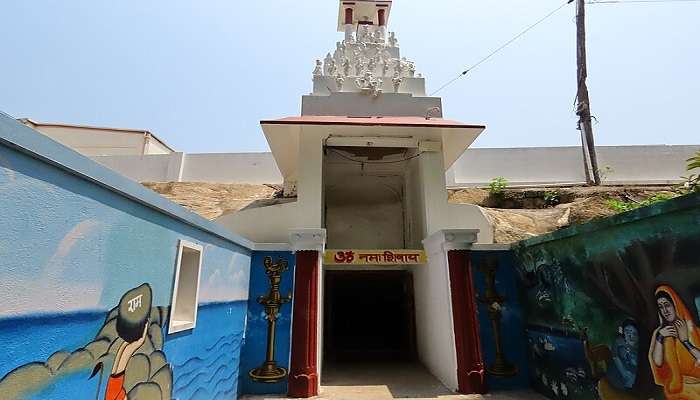
Hulimavu Cave Temple, well-preserved amidst the vibrant greenery of Hulimavu in Bangalore, is an undisturbed treasure trove where nature and spirituality coexist in perfect harmony. This extremely old cave temple, ensconced within a single rock structure, was devoted to Lord Ranganatha Swamy and Goddess Anjaneya or Hanuman. From both architectural and spiritual viewpoints, this temple stands as a corruption of quietness and serenity where die-hard devotees can rest their souls and satisfy their spiritual hunger away from the hectic city life of Bangalore.
Hulimavu Cave Temple Timings
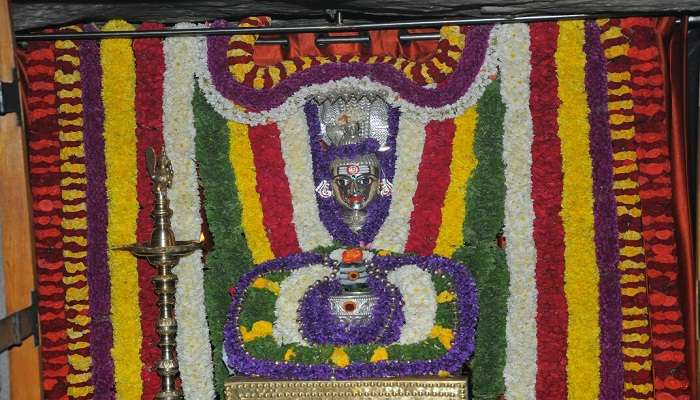
The Hulimavu Cave Temple welcomes all devotees from early morning to late evening, generally 6:00 AM to 8:00 PM. During this time, people can visit and avail themselves of daily rituals and blessings from deities. For any changes in timings, especially for unique occasions or festivals, it is better to contact the temple administration or visit the temple’s official website.
Must Read: Shivaganga Falls
Hulimavu Cave Temple History
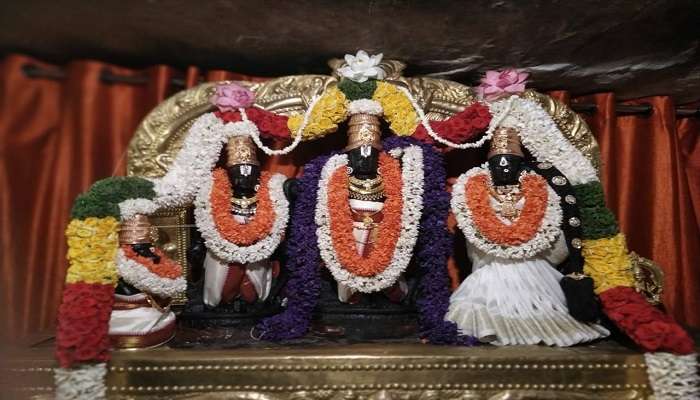
The Hulimavu Cave Temple is several centuries old and has an eventful history. It is a sheer work of art carved out of a single large rock, representative of ancient rock-cut architecture. It is believed to have been built during the reign of the Chola dynasty.
Renovations and additions were made over time, but the temple still retains its original charm and spiritual significance. This temple belongs to the main deity, Lord Ranganatha Swamy, and Goddess Anjaneya, who is Hanuman. Devotees come from far to this place not only to worship but also to seek blessings and enjoy the history and culture of the temple.
Architecture
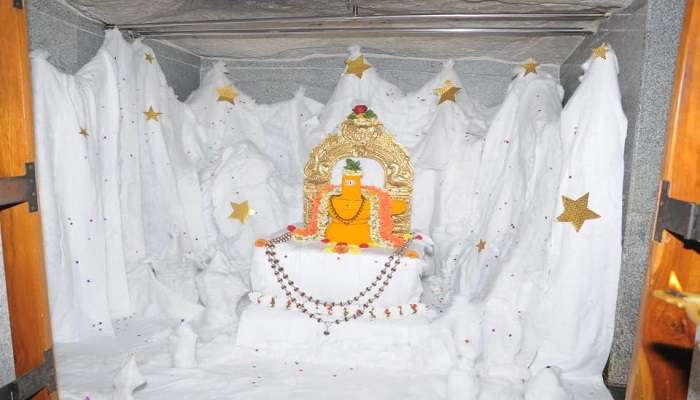
The Hulimavu Cave Temple is a magnificent monument to ancient India’s cultural heritage and outstanding workmanship. The rock structure, with its intricate carvings and dedication to Lord Shiva, shows both the spiritual and artistic heights scaled by the Western Ganga Dynasty. The temple’s existence through the ages as a centre of worship and pilgrimage draws devotees and interested visitors to such a site as this, which holds out both an exclusive, pioneering glimpse into the past coupled with an immense sense of spirituality.
The Hulimavu Cave Temple stands as a continuity symbol in the religious tradition of the times, preserved through the centuries to inspire all interested in India’s diverse cultural tapestry. It will eternally continue to be an icon of reverence and artistry and a milestone in the cultural landscape of Karnataka.
Suggested Read: Resorts Near Brahmavar
Architectural Features And Layout
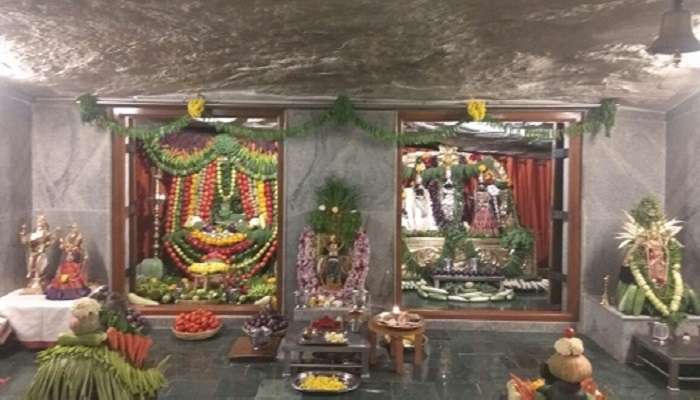
The Hulimavu Cave Temple is a monolithic rock-cut architecture cut out from a rock formation. This is a common feature of ancient Indian rock-cut architecture. The temple consists of a sanctum sanctorum or garbhagriha, mandapa or a hall, with the roof supported by pillars. The door leading to the temple has several enchanting carvings of various gods and goddesses, mythological figures, and a range of designer patterns.
In its sanctum sanctorum, a Shiva Linga- an abstract image of Lord Shiva- has been installed; it is the principal religious icon. The pillars and walls of this temple are spangled with a wide range of sculptures depicting scenes from Hindu mythology, heavenly beings, and floral motifs. Apart from lending charm to the beauty of this temple, these carvings depict several religious teachings and philosophic ideas in vogue at that time.
Tip: Since it is a temple, a religious place of importance, one should necessarily remove their footwear before they enter the sanctum sanctorum. It is good to wear casual footwear that can be easily pulled out and carried. Secondly, it would also be appreciated if one wears modest and conservative attire.
Symbolism And Iconography
The temple’s architecture and iconography store deep symbolism and religious significance. Lord Shiva in all his forms-Nataraja, the cosmic dancer; Ardhanarishvara, the composite form of Shiva and his consort Parvati-serves to depict the multifarious nature of divinity and order in the cosmos, with all its chaotic energy, forming a favourite theme in Hinduism. The other carvings on the rock walls of the deities and mythical creatures are believed to represent a pantheon of divine beings as algae, blessing and protecting the devotees. Elaborate detailing of the sculptures signifies superlative craftsmanship by the artisans who carved each figure with great precision and devotion.
The Hulimavu Cave Temple is an example of the cultural heritage and architectural excellency that ancient India continues to be proud of. The cave attracts devotees and historians into art equally because it reveals a glimpse of spiritual and artistic accomplishments in Karnataka’s history. Thus, this cave is important for being a religious shrine and a rock-cut architectural monument of endurance.
Tip: Be silent and hospitable while inside the temple complex. Refrain from loud conversations, taking photographs if not allowed, and other acts that can distract other visitors or disturb the sanctity of the place. This is so that your experience at the place is as peaceful and thoughtful as it can be.
Suggested Read: Best Places To Visit In Karnataka
Hulimavu Cave Temple Significance
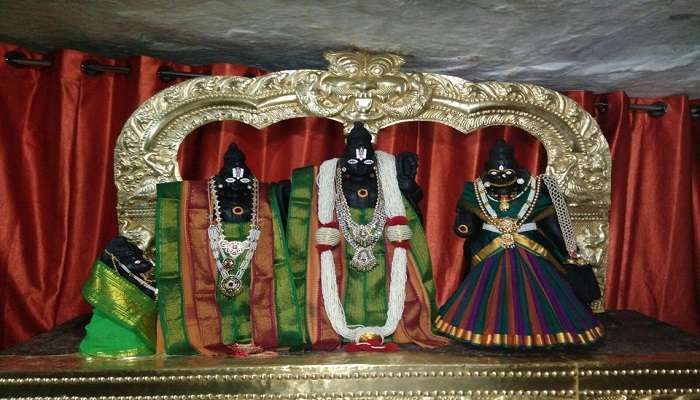
The Hulimavu Cave Temple holds cultural, historical, as well as religious importance to the Indian state of Karnataka. Constructed during the 9th or 10th century AD of the Western Ganga Dynasty regime, this temple is considered one of the best rock-cut architecture examples of that era. As it is devoted to Lord Shiva, many devotees come to this spiritual haven to offer prayers and seek his blessings. Its monolithic structure, carved out of a single rock, speaks volumes of the skill and craftsmanship of ancient craftsmen. The intricate carvings in the temple, picturing scenes from Hindu mythology and celestial beings, not only portray artists’ finesse at work but also depict deep religious symbolism and teachings.
Over the centuries, the Hulimavu Cave Temple has stood as a testament to cultural continuity and religious devotion. Whether or not that be so, pilgrims and visitors have been moved by the historical significance and architectural beauty of this shrine to make it one of the most endearing heritage sites in Karnataka, adding to the beauty of its landscape.
Further Read: Budget Restaurants In Gokarna
Let Hulimavu Cave Temple show you its timeless appeal and spiritual aura. Plan your trip to Karnataka today to witness the art of rock-cut architecture, which is intricate in beauty; its exquisite carvings depict Salir Hindu mythology, so fastidiously and see for yourself, the serenity that captivates visitors since ages. Showcase Karnataka’s cultural and historical legacy on this heritage site, so cherished and awaited. So gear up to go to this Hulimavu Cave Temple today and get drenched completely in its beauty and spiritual aura.
For our editorial codes of conduct and copyright disclaimer, please click here.
Cover Image Credit: Chaitanya for wikimedia commons
Frequently Asked Questions About Hulimavu Cave Temple
What is Hulimavu Cave Temple?
Hulimavu Cave Temple is a very ancient rock-cut temple of Lord Shiva. It is located in Bangalore of Karnataka, India. That is a monolithic structure as well as famous for the intricate carvings.
When was Hulimavu Cave Temple built?
This temple was constructed in the 9th or 10th century AD. In this time period Western Ganga Dynasty ruled.
What are the architectural features of Hulimavu Cave Temple?
This temple is cut out of a rock and consists of a sanctum sanctorum - garbhagriha, a mandapa or a hall and beautifully cut pillars and walls with carvings of Hindu deities and mythological scenes on the rock.
Why is Hulimavu Cave Temple significant?
They have cultural as well as historical significance because they represent the architectural excellence of ancient India. Hulimavu Cave Temple is an important spiritual centre since Lord Shiva is housed here, one among the most revered entities in the Hindu pantheon.
Is it possible to visit the Hulimavu Cave Temple?
Yes, the temple does welcome visitors. With its peaceful ambience, it invites one to wait before the Lord in prayer and meditation and also to explore the rich historical and artistic background.
People Also Read:
Yamunotri Temple Sri Gangadhareshwara Temple Arulmigu Ramanathaswamy Temple

Unveil the hidden treasures of the globe and turn every travel dream into reality. As a Content Writer, I am passionate enough to craft stories from ancient wonders to modern marvels. My words paint the picture-perfect itinerary for unforgettable experiences. Let my words be your trusted guide to immerse in the diverse culture and discover the beauty of the unknown.











